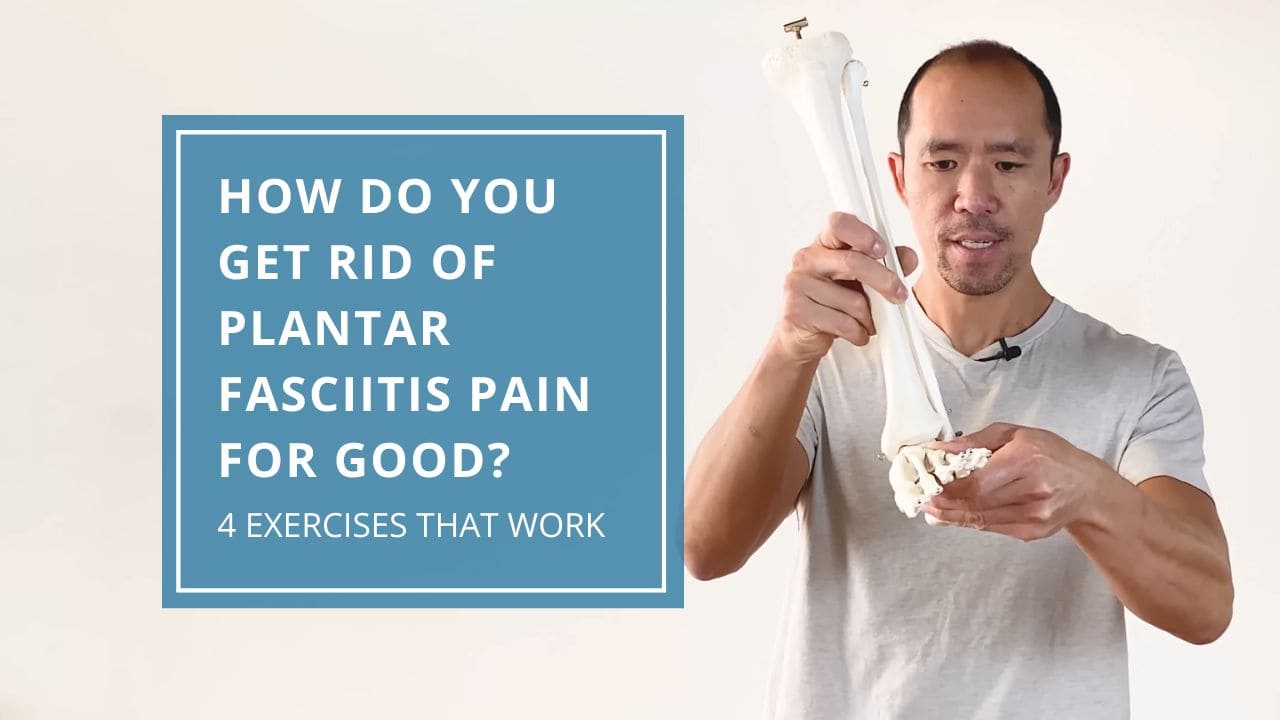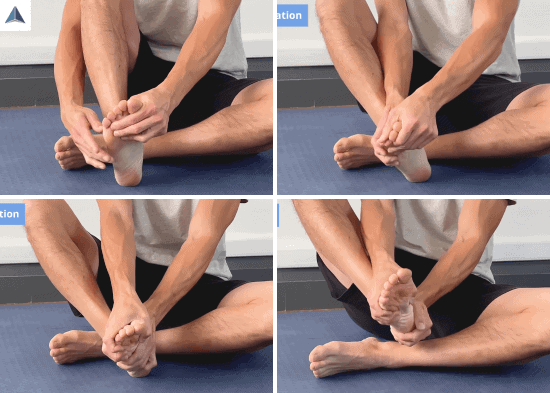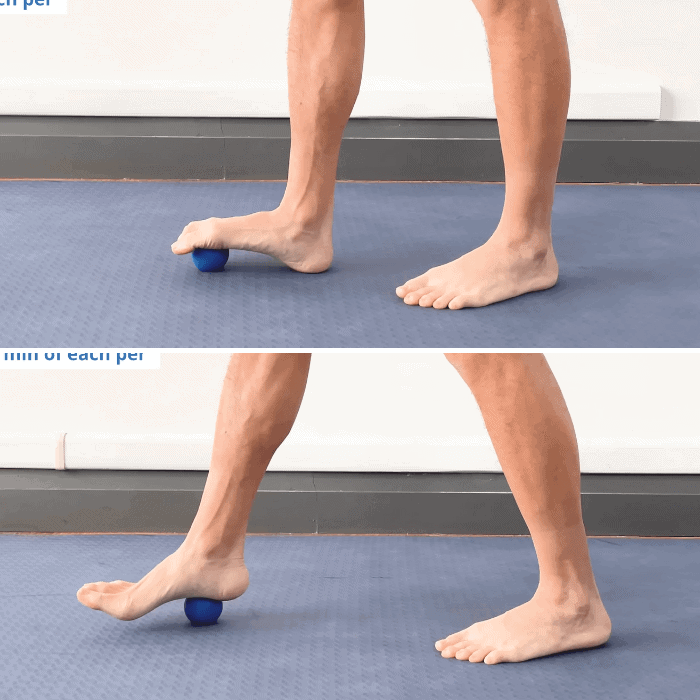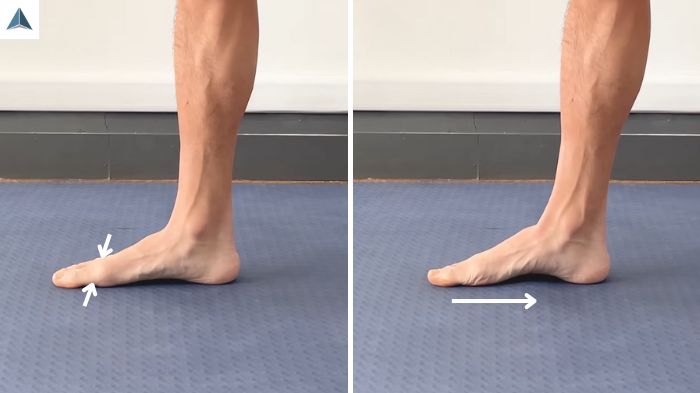
Why You Have Plantar Fasciitis (It’s Not Just Inflammation)
Plantar fasciitis isn’t just about inflammation – although that burning pain at the bottom of your heel certainly feels like it. But the root of the problem is often biomechanical: poor foot posture, collapsed arches, weak intrinsic foot muscles, and excess tension caused by abnormal loading during movement.
Recent research has shed light on three major contributors:
- Overpronation Increases Risk: A 2024 study found that abnormal foot posture – especially hyperpronation (where the foot rolls inward excessively) – is significantly associated with a higher risk of plantar fasciitis and Achilles tendinopathy [1].
- Flexible Arches Increase Tension: Another study showed that people with flexible arches experience more strain in the plantar fascia as their arch flattens under load (e.g., when standing or running) [2]. This causes increased tension, which over time can lead to pain and injury.
- Higher Body Weight = Higher Risk: A third study confirms that greater body mass puts increased mechanical load on the fascia, further aggravating the condition [3].
All three point to one critical insight: if you can’t maintain good foot posture and a resilient arch, you’re at greater risk for developing plantar fasciitis.
Why Most Plantar Fasciitis Treatments Fail
Typical treatments like orthotics, cortisone injections, passive foot stretching, or calf raises may bring temporary relief, but they often miss the mark. They don’t correct the underlying mechanical dysfunction.
Most of these strategies fail to address overpronation, joint immobility, and intrinsic foot muscle weakness. That’s why the pain returns.
To get long-term relief, you need an approach that:
- Restores joint mobility
- Reduces fascia tension safely
- Activates and strengthens intrinsic foot muscles
- Integrates foot control into functional movements
How Do You Get Rid of Plantar Fasciitis Pain for Good?
Let’s dive into 4 key exercises that work with your body, not against it. These movements restore mobility, relieve tension, and rebuild the strength you need for a pain-free foundation.
1. Foot Joint Mobilization
Restoring mobility in the foot’s joints is a crucial first step. Your foot contains 33 joints and 26 bones – and if even a few of them are restricted, the muscles around them can’t function efficiently. Stiff joints lead to poor movement patterns, causing the plantar fascia to take on more strain than it should. Foot joint mobilization primes the foot for proper loading and prepares it for strengthening work.
By gently manipulating the toes, metatarsals, midfoot, and heel, you improve proprioception, relieve tension, and create more space in tight areas. Think of it like prepping the soil before planting – this gives the strengthening exercises that follow a better chance to “take root.”
- Toe wiggling and stretching: Flex, extend, and stretch your toes to loosen individual joints and muscles.
- Metatarsal mobilization: Grab four lateral toes and the big toe separately. Wiggle gently, then move sequentially to each metatarsal joint.
- Midfoot and heel “wringing”: Hold the midfoot and twist it gently against the heel, like wringing out a sponge.
- Cycle through each motion for at least 60 seconds per foot.
Why it works:
- Enhances joint mobility for better foot mechanics
- Helps “wake up” stiff, underused areas of the foot
- Prepares foot for activation and strengthening
2. ASMR: Plantar Fascia & Cross Friction
This approach targets the plantar fascia and surrounding tissues using a massage ball – but with a twist. Instead of static pressure, you’ll move the foot dynamically over the ball, activating the tissue while you release tension. This approach helps remodel fascia, improve blood flow, and restore movement- especially valuable when dealing with a stiff, overworked plantar fascia.
Importantly, this method avoids directly aggravating acutely painful areas. By working around the inflammation (rather than through it), you can create tissue change without making things worse. As symptoms improve, you can gradually increase pressure and target areas closer to the pain.
- Position your foot over a massage ball with the toes wrapped around it.
- Apply gentle pressure and roll from each toe’s base toward the heel, maintaining extension through the toes.
- Avoid the painful heel zone if needed, working around it instead.
- Do this for 1–2 minutes per foot.
Add cross-friction massage:
- Move foot side to side over the ball near the painful zone.
- Focus around the heel and arch, staying clear of high-pain areas early on.
Why it works:
- Reduces tension in the plantar fascia
- Aids tissue remodeling and healing
- Improves circulation and soft tissue mobility
3. Short & Skinny Foot
This foundational movement trains the intrinsic muscles of the foot – the small stabilizers responsible for lifting and supporting your arch. These muscles, like the abductor hallucis and flexor digitorum brevis, play a critical role in maintaining proper foot posture during walking and standing. When they’re weak, your arch collapses, placing more strain on the plantar fascia.
By performing the short and skinny foot exercise, you’re reactivating these underused muscles and teaching them to contract intentionally. It’s about owning your arch – not relying on passive supports like orthotics. This control is what protects against overpronation, gives your arch structure, and lays the foundation for every step you take to be more aligned and pain-free.
- Start seated or standing, feet flat.
- Spread your toes using your fingers or on your own.
- Make the foot “skinny” by pulling the metatarsals inward.
- Make the foot “short” by drawing the forefoot toward the heel, forming an arch.
- Hold for 5–10 seconds, then relax. Repeat 3–5 times per side.
- Keep 50% of your body weight through the forefoot and 50% through the heel while standing.
Why it works:
- Strengthens your arch-support muscles
- Reinforces foot alignment and balance
- Builds neuromuscular control to prevent pain recurrence
4. Reverse Lunge
Once you’ve developed good arch control with the short and skinny foot, it’s time to integrate that strength into full-body movement. Enter the reverse lunge – with foot focus.
This exercise not only builds strength in your quads, glutes, and hamstrings, but it also challenges your arch muscles to stay active while you move. You’ll practice keeping your weight balanced between the heel and ball of the foot, all while maintaining proper knee tracking and avoiding pronation. Directional variations (like curtsy and angled lunges) further challenge stability across different movement planes.
By turning lunges into a foot-strengthening exercise, you build resilience that transfers to everyday activities – like walking, running, and hiking – where plantar fasciitis tends to rear its ugly head.
- Perform a standard reverse lunge, maintaining even pressure through the forefoot and heel of the front foot.
- Engage your arch muscles by keeping the “short and skinny” foot active throughout.
- Allow the knee to travel over the toes, but only as far as you can go while keeping the heel grounded.
- Add variations: Step back on a diagonal or across your body (curtsy) to build multi-directional stability.
- Start with one side at a time to improve control before alternating.
Why it works:
- Builds real-world strength and coordination
- Trains the arch to stay lifted during movement
- Improves balance and gait mechanics
Routine Summary & Progression Tips
| EXERCISE | SETS X REPS – HOLD |
|---|---|
| Foot Joint Mobilization | 1 min per |
| ASMR: Plantar Fascia & Cross Friction | 1 min of each per |
| Short & Skinny Foot | 2 sets x 3-5 reps per – 5-10 sec |
| Reverse Lunge (3-Way) | 1-3 sets x 6-8 reps per |
If you’re wondering how to get rid of plantar fasciitis pain – not just temporarily easing it – you’ll need to commit to consistency and progression. These exercises are not just quick fixes. They’re designed to retrain how your feet function, how your muscles fire, and how your body supports itself during every step you take.
Week 1–2: Daily Routine to Reduce Pain and Rebuild Basics
In the first two weeks, focus on doing the full routine daily. This period is all about resetting your foot function – improving joint mobility, releasing tension in the fascia, and beginning to activate the deep stabilizing muscles that have likely been asleep for a while.
- Foot Joint Mobilization: 1–2 minutes per foot.
- Active SMR + Cross Friction Massage: 1–2 minutes per foot.
- Short & Skinny Foot Exercise: 2 sets of 3–5 reps per side, holding each contraction for 5–10 seconds.
- Reverse Lunge Variations: 1–3 sets of 6–8 reps per leg.
These daily sessions don’t take long – 10–15 minutes total – but consistency here will dramatically shift how your feet feel and function.
Week 3–6: Build Strength and Foot Resilience (2–3x/week)
As pain improves, reduce frequency to 2–3 sessions per week. Increase difficulty to challenge your foot control and endurance.
- Hold arches longer (10+ seconds) in short and skinny foot.
- Add deeper lunge angles and resistance if tolerated.
- Begin barefoot walking indoors for short periods (1–2 minutes on carpet). Increase only if pain-free.
- Continue mobility and SMR work to maintain tissue quality.
Beyond 6 Weeks: Maintenance and Integration
At this stage, most people see significant improvement or full resolution. Now it’s about keeping those results. Use these exercises 1–2x/week or integrate them into warm-ups. Start adding more barefoot activities, and if you train, consider going barefoot for certain lifts or movements to reinforce intrinsic foot activation.
These intrinsic foot strengthening techniques also complement the routine above perfectly.
Want More Than Just Exercises?
If you’re ready to take full control of your plantar fasciitis and finally get long-term relief, check out our Foot and Ankle Pain Solution program. It’s loaded with progressive exercises, deeper techniques, and full strategies designed to:
- Restore mobility
- Eliminate pain
- Strengthen your feet for good
Also check out this Plantar Fasciitis Relief Guide for more insights into managing this condition.
KEY TAKEAWAYS
- Plantar fasciitis is often caused by weak foot muscles, flexible arches, and poor posture – not just inflammation.
- Overpronation and arch collapse increase tension on the plantar fascia.
- Common treatments like orthotics and stretching don’t fix the root cause.
- Effective heel pain exercises include joint mobilization, active fascia release, arch strengthening, and foot-aware movement like lunges.
- Barefoot training is helpful – but only after you’ve built enough strength.




